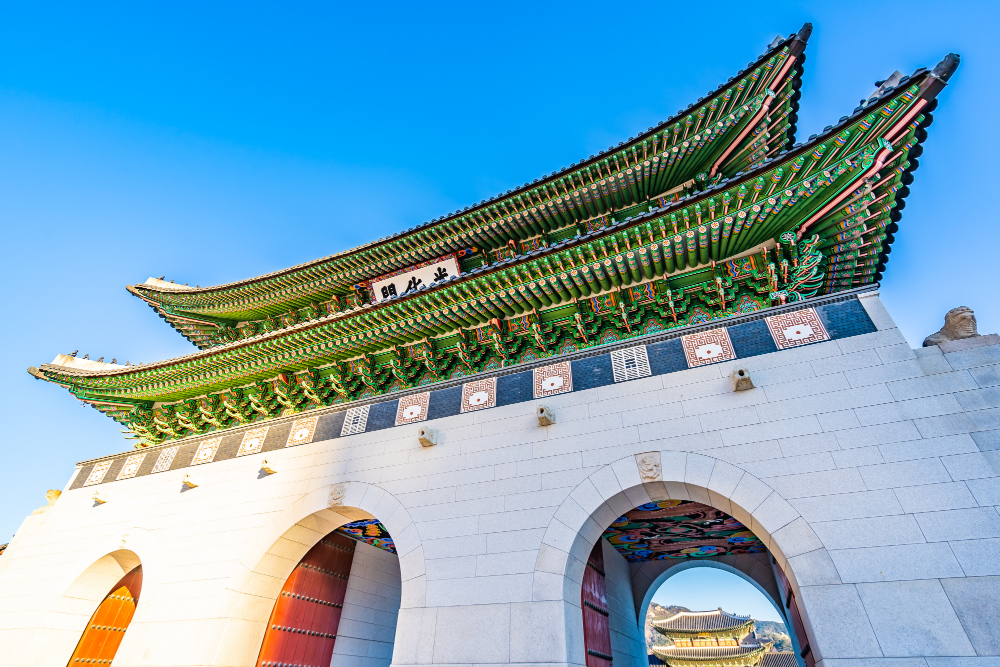역사박물관 전시안내 번역(영어 번역본)The National Museum of Korean Contemporary History is a historical and cultural space for transmitting Korea’s contemporary history from the open-door period in the late 19th century to present to the future generation, and to deliver message of hope from its history of overcoming hardships and adversity through the dedication of Korean people.
Situated at a location which best shows the significance of Korean history and is conveniently located near other historical and cultural facilities, the National Museum of Korean Contemporary History is a good place to rest and discuss Korea’s culture and history.
The building has been remodeled to emphasize its historic and symbolic value as having housed major government bodies such as the Economic Planning Board and the Ministry of Culture, Sports and Tourism. It is also a green cultural facility that uses environmentally friendly materials and energy-saving technologies.
Exhibition Gallery 1 (3rd floor)
The birth of the Republic of Korea (1876 ~ 1945)
Noble spirit of heroes who sacrificed themselves toward the dream of independent modern state and restoration of sovereignty. Exhibition Gallery 2 (4th floor)
Laying the Foundations of the Republic (1945 ~ 1960)
Indomitable will that did not lose hope amidst the ruins of war and layed the foundations for the modern country. Exhibition Gallery 3 (5th floor)
Growth and Development of Korea (1961 ~ 1987)
Dedication and passion of Korean people that overcame hardships and adversities and allowed both the economic growth and the democratization. Exhibition Gallery 4 (5th floor)
Advancing Korea and its Leap into the World (1988 ~)
The story of present and future of Korea’s growth. Special Exhibition Gallery (1st floor)
A special exhibition hall for in-depth coverage of various topics related to the contemporary history of Korea. Children’s Gallery
“Our history’s treasure trove” will allow the children to learn history through vivid exhibits. Dreams of independent modern state and frustrations Joseon (a Korean establishment before the Republic of Korea) tried to implement modern reforms and preserve its independence after its door opened to the world. However, interference of foreign powers led to deprivation of its sovereignty by Japan. Nevertheless, the nation never lost its dreams of becoming an independent modern state through the declaration of the Korean Empire, civilian armies, and the patriotic enlightenment movement (Denny Flag, 262.0 cm × 182.5 cm, 1890) The Provisional Government of the Republic of Korea and the independence movement
After Korea was deprived of its sovereignty in 1910 by the Korea-Japan Annexation Treaty, there were various movements both inside and outside the country for the country’s independence. The national Samil Movement demonstrated Koreans’ desire for independence to the rest of the world, and the provisional government was established to organize revolt against the Japanese rule and to lead the independence movement. The government advocated popular sovereignty and a democratic republic in which all of its people are equal and free. As stipulated in the current Korean constitution, the provisional government was the historical precursor to the Korean government that was established in 1948. (Samil Declaration of Independence or Gimi Declaration of Independence / 44.9×20.1cm / 1919) 8·15 Independence Day of 1945
With Japan’s surrender to the Allied Powers in August 15th, 1945, Korea became an independent nation. However, the United States and the Soviet Union divided the Korean peninsula in half with the start of the Cold War. The U.S. subsidized the government in South Korea while Kim Il-sung gained power in North Korea with support from the Soviet Union. The left-wing and the right-wing advocates had conflicting opinion on the trusteeship by the superpowers, which led to severe conflicts and failure to establish a unified government in the Korean peninsula. (Postage stamp commemorating Korean independence, 2.5 × 3.0 cm / 1945) -Indomitable will that did not lose hope amidst the ruins of the Korean War and layed the foundations for the modern country.
Founding of the Korean government
In the middle of confusion caused by the conflict between the left and the right that reflected the tension of the Cold War, the U.N. General Assembly resolved for general election of Korea, but the election was held only in South Korea due to opposition by the Soviet. With the first democratic election in May 10th of 1948, the congress was held, the constitution was created, and the president was elected to establish the Korean government. (a poster from the May 10th general election, 37.5 × 51.5 cm / 1948) The Korean War and restoration after the war
The Korean War started by the ambush of North Korea resulted in temporary occupation of most of Korea by the communist forces. The South Korean people defended the country with their lives, but what was left after the war were enormous casualties and devastated lands. Nevertheless, people of Korea restored the land from the ruins of war with their strong will (Weapons and relics from Korean War) Establishing the basis of a modern state
After the Korean War was a period of difficulty for Korea, as it had to receive assistance from the international society. But it was also a time of rebuilding, of forming the basis for the industrialization and democratization Korea enjoys today. Through foreign assistance, the government laid the foundation for economy, and fostered future leaders through mandatory education. Also, the April Revolution laid the foundation for democratization of Korea, by toppling the corrupt authoritarian regime by the citizens and students. However, the Second Republic, which emerged from the April 19 Revolution, ended before implementing a democratic politics because of the May 16 coup. (The first state textbook for Korean Language 12.5 × 18.5 cm / 1948) | 